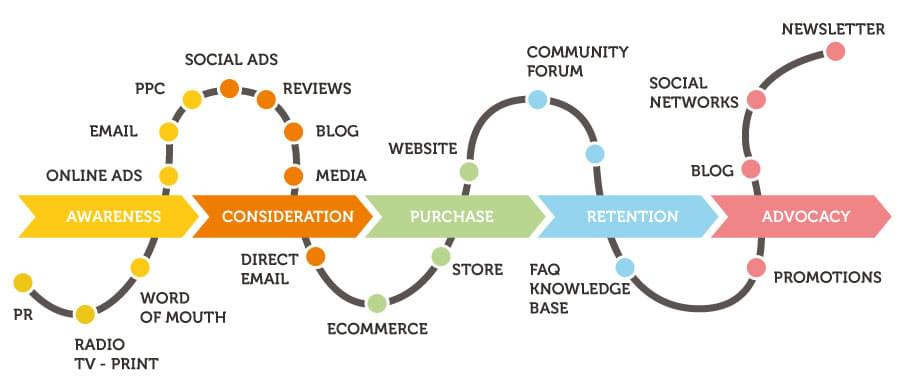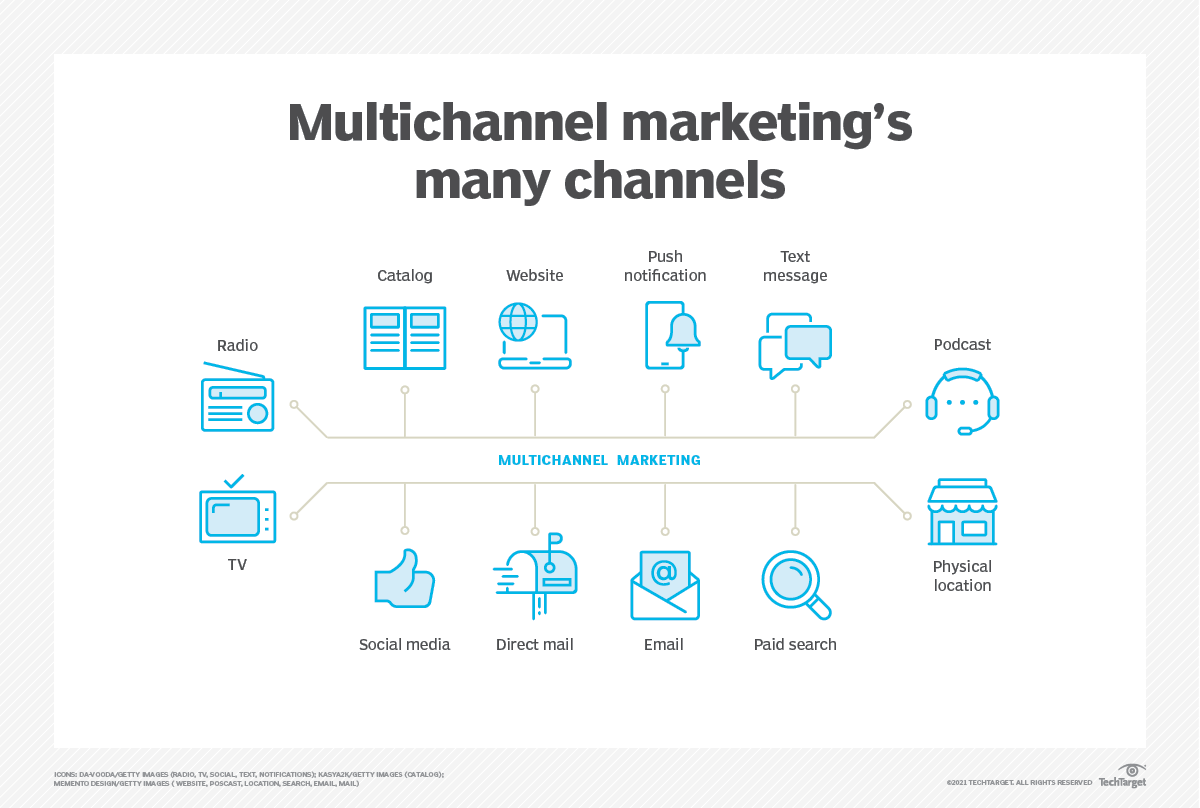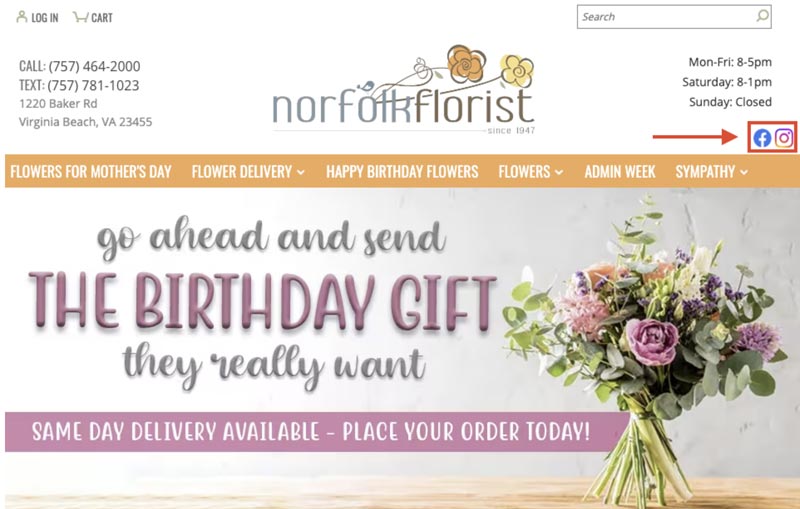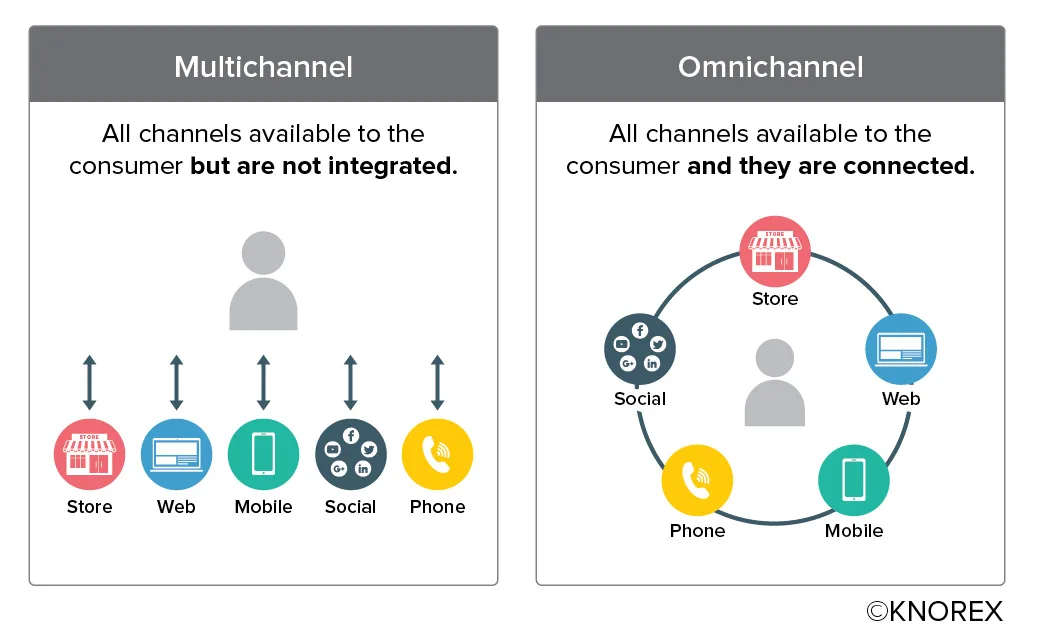Omnichannel marketing and multichannel marketing are both buzzwords you hear a lot. And since both strategies incorporate multiple channels to engage with customers, it can be tricky to distinguish the differences between them.
But there’s a reason for the separate terms — both have different pros and cons for implementation. One approach might work well for one brand but not for another.
So if you’re struggling to decide between omnichannel and multichannel marketing strategies, you’ve come to the right place.
In this guide, we’ll walk you through the differences and help you determine which approach best fits your business.
And with our insider tips and expert advice, you can craft a winning marketing strategy to help you connect with your customers no matter where they are.
Let’s dive in.
What is omnichannel marketing?
An omnichannel marketing strategy links technology to your website, social media, email, and more to provide a consistent customer experience.
You can create a seamless customer journey that starts with a customer’s first interaction with your brand and ends with them making a purchase (and hopefully becoming a brand advocate).

Source: SaaSList.com
The key is creating a seamless customer experience across all channels by providing customers with the information they need during their journey (read: everything available at their fingertips).
But the most important thing to remember with an omnichannel strategy is to stay consistent in the messages and concepts you communicate through all your marketing channels.
To paint a clearer picture, let’s look at an example.
Suppose you are a company that sells fleet dash cams and automotive accessories to transportation companies, and you want to intertwine traditional communication approaches with some newer ones. Not a problem. This scenario is where an omnichannel strategy thrives.
However, the messaging should be the same, whether investing in a content writing service to produce high-quality content for your blog or using Instagram ads for retargeting your website visitors.
The focus is to share valuable content throughout the journey to purchasing a fleet dash cam, and it might look something like this:
- Writing a blog post that compares the top fleet dash cams on the market;
- An Instagram ad retargeting users with discounts on the fleet dash cam they abandoned in their cart;
- An email marketing campaign after their first purchase to share the latest and greatest dash cam features.
Omnichannel marketing involves a variety of ways to engage customers throughout the buyer’s journey. But they all work together as part of an integrated strategy to score conversions and build loyal customers.
But remember that this approach requires significant customer data to work. So if you are employing an application or API in your campaign to collect this customer data, you may consider adding security standards like JWT authentication to protect customer data while delivering a seamless experience across all channels.
It’ll protect you from potential reputational and financial harm while also building trust and confidence in your brand in the minds of consumers. A win-win.
What is multichannel marketing?
According to a study by Gartner, the top objectives for implementing a multichannel marketing strategy include:
- Increasing brand awareness
- Improving lead quality
- Delivering a personalized customer experience
Unlike omnichannel marketing, all channels are independent of each other. This unique difference allows you to use different tactics for each channel without worrying about whether they’ll flow together.

Source: TechTarget
But to run a successful multichannel marketing campaign, you must define and prioritize the most popular platforms among your client base.
For instance, if you run an online store that sells video games and other popular downloadable content, like the Fortnite Harley Quinn or Mario Kart expansion packs, you should focus on the go-to platforms for the gaming community, such as Twitch, YouTube, and Reddit.
Stay away from platforms that don’t pertain to your audience. There’s no point in spending time and money attempting to connect with video game enthusiasts on platforms they don’t use, like LinkedIn and Pinterest.
This strategy works well for brick-and-mortar businesses as well. For instance, this local Norfolk florist relies on Facebook and Instagram to market their flower bouquets, as their audience is mainly on those two platforms.

Source: NorfolkFlorist.com
Notice how they prominently display the links to their social media platforms on the website homepage. When you display all your social media marketing channels prominently on your website, it makes it easier for customers to find you on their preferred platforms.
Don’t underestimate this small detail. Park these links on your homepage or website footer for best results. That way, your website visitors can find them quickly and easily from the first site visit.
One powerful dynamic of multichannel marketing is that these channels are separate sales opportunities to increase customer reach. Each channel opens the door to deliver an individual message so that customers only need to go to one place to find what they want. It’s simple and straightforward. No muss, no fuss.
Which is better — omnichannel vs. multichannel marketing?
Omnichannel or multichannel marketing? That’s the million-dollar question.
So when choosing between omnichannel and multichannel marketing, it all depends on your business goals and the type of product or service you provide.
In a 2021 study, Omnisend found that an omnichannel approach works wonders in the e-commerce industry. The research shows that businesses using three or more channels increased their order rate by 494% compared to companies using only one channel. And that’s not a drop in the bucket.
So if your company sells makeup, t-shirts, or anything else in an online store, an omnichannel marketing strategy might fit like a glove and drive the record sales you’ve always dreamt of.
But what if you run a SaaS company? What’s the best approach? Are the lines blurry? Yes. But we’ll try to break it down even further.
The best way to choose the right approach for your business is to consider how you want to tailor your customer experience, what resources you have available, and how flexible your strategy is.
With multichannel marketing, your channels don’t require any interconnectedness, allowing for the most brand-centric and flexible approach.
On the other hand, all of your channels must work together in an omnichannel strategy to provide a streamlined customer experience that adapts at every touchpoint.

Source: Knorex
That means storing your data in different tools or warehouses requires integrations to sync data across all your business tools. For example, you may need an integration to sync Snowflake to Salesforce data or Reverse ETL to sync data from your warehouse into another tool in your tech stack.
In other words, an omnichannel approach might cost more upfront (time, money, resources) to get everything set up to communicate with each other and provide that seamless experience it’s known for.
On the other hand, a multichannel marketing strategy can be up and running as quickly as you can send out your first email campaign, create social media profiles, or build a website.
Let’s take a closer look at each strategy to drive it home.
When to use omnichannel marketing?
The omnichannel marketing approach can be more expensive than multichannel marketing because it requires additional resources like social media management software and a product information management system. And every channel needs to coordinate with each other.
But the upfront investment in the appropriate technology can be worth it. Customers get an integrated experience across several touch points — including social media platforms, email newsletters, video content, and chatbots.
To create a smoother customer experience and increase customer retention, you should consider an omnichannel marketing approach, especially for service-based industries.
Building a seamless experience is the perfect recipe for landing repeat customers for years to come. By leveraging embedded analytics tools throughout your omnichannel strategy, you can better understand how customers interact with your brand and optimize your campaigns for maximum impact.
When to use multichannel marketing?
Multichannel marketing is the more cost-effective approach for your business, offering additional flexibility compared to the omnichannel strategy.
B2B operations with specialized products, like a colocation data center, can use multiple channels to reach a wider audience and focus on a consistent brand message.
Not all audiences are looking for many a million options or deals. So multichannel marketing may be the best way to create a cohesive narrative across your channels when selling a product or service at a consistent price.
Consider multichannel marketing to prioritize your product or service without too many distractions. And you get to speak directly to your customers on their chosen channels. The result? Happy customers and a better bottom line.
Wrapping up
When choosing between omnichannel and multichannel marketing, there’s no one-size-fits-all solution. The right choice ultimately depends on your business goals, target audience, and available resources.
If you aim to provide a seamless customer experience across all channels and touchpoints, then omnichannel marketing may be your first choice. On the other hand, if you have a limited budget and want to focus on the most effective channels for your target audience, multichannel marketing might be the way to go.
The secret to success is understanding your customers’ preferences and behaviors and using that information to create a marketing strategy that meets their wants and needs. Doing so can build stronger customer relationships and drive better business results.
For more great tips, tricks, and how-to’s, subscribe to the DivvyHQ blog today!